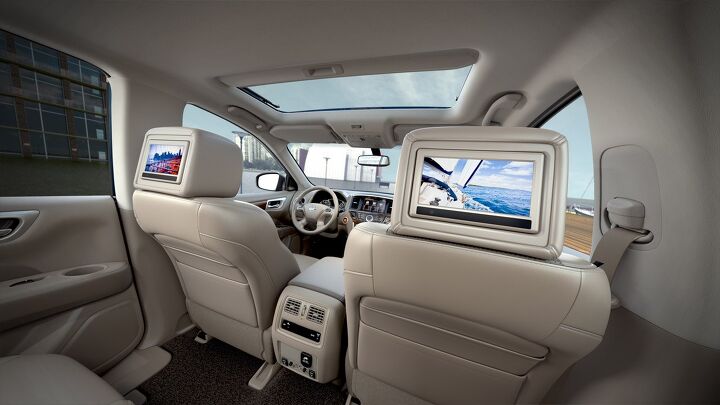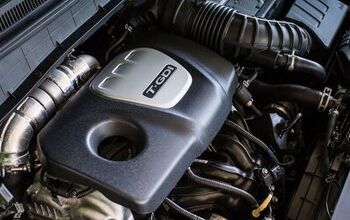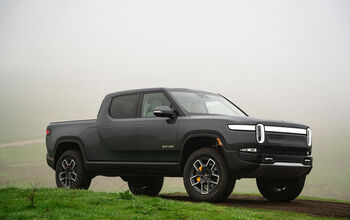8 Important Tips for Buying a Used Luxury Car

Depreciation can be a beautiful thing — especially if you’re excited by the idea of affordable access to a world-class luxury ride.
Many top-line sedans that were really expensive when new will drop a significant amount of resale value after just a few years, meaning that a six-figure car that’s a few years old and has reasonable mileage can be had for a fraction of its original cost. Get it right and an older, higher mileage luxury flagship sedan might be available to you for what its original owner paid in tax.
Many high-end luxury flagship models still look like big money today, allowing drivers to be ballers on a budget. Whether you’re after an Audi A6, a Lexus GS, a Mercedes S-Class, a BMW 7 Series, or any other top-dog posh-cruiser from the used car marketplace, options are abundant for rolling like a big-dollar shot-caller without the appendage-severing prices.
Whatever the luxury car you’re after, we’ve compiled some hints and tips for you to consider. Keep these in mind as you research and test drive potential used luxury cars, as they can help save you money, time and headaches.
Have the Vehicle Scanned
The used luxury sedan you’re considering is a high-tech piece of machinery with numerous sensors, controllers, computers, and modules that communicate with and monitor one another to keep things ticking. Whether or not a check engine light or some system warning message is present in the instrument cluster, be sure to have the vehicle you’re considering subjected to a full diagnostic scan, preferably by a dealer technician. Some potentially pricey issues within the electronics and sensor network will cause a warning light to come on, while others won’t. A diagnostic scan is cheap, fast and can reveal a multitude of potentially concealed issues that might have nasty plans for your wallet.
ALSO SEE: 5 Expert Tips for Buying a Used Sports Car
Have the Vehicle Inspected and Updated
A Pre-Purchase Inspection (PPI) by the appropriate dealer for the vehicle you’re considering is highly recommended. During the PPI, a trained technician familiar with the ride can inspect it from rims to roofline for signs of countless problems or issues. A PPI is typically about a $100 job and can reveal thousands of dollars’ worth of problems. If any are detected, call them into your pricing negotiations.
For maximum peace of mind and long-term, trouble-free operation, buying a used luxury ride without a PPI is not advised. While you’re at the dealer, talk to the service advisor about software updates — some may be available to pre-emptively fix or address some latent problem or issue. Running a used luxury car with all software updates applied is a great way to avoid headaches and getting frustrated when certain systems fail to work as expected.
Avoid the Air Suspension
Many top-line sedans were offered with some form of air suspension system — and you should probably avoid used models equipped with it. In years of researching used vehicles, I have yet to find an air suspension-equipped ride that doesn’t have a group of owners reporting issues as the system ages, leaks or fails. Air suspension can improve the ride of the vehicle but the repair costs when the system eventually needs work is hardly worth it. Avoid air suspension where possible and if you’re set on a ride with it, consider adding extended warranty coverage that may protect you from repair costs.
Check the Central Command System
If a former owner has accidentally emptied a chai latte into the center console and nuked the central command system controller, you’ll want to know about it before you agree to buy. Whether it’s iDrive (BMW), COMAND (Mercedes), MMI (AUDI), CUE (Cadillac), RTI (Lexus), or any other branded central command interface available, be sure to run the system through its paces. Connect a smartphone via Bluetooth, make and take calls, play media from various sources, toggle through all menus and commands and be absolutely certain that the display screen and controller, as well as all associated buttons, work consistently every time.
If the vehicle you’re considering has a central control knob, dial or joystick, confirm that it works in every direction and isn’t sticky, otherwise, it may need replacement. Confirm proper operation of all steering wheel-mounted controls, too. If the central command interface is laggy, glitchy, fails to boot consistently or exhibits any other funny business, it may need a hard reset, a software reflash or total system replacement. These come with varying impacts on your bank account, so get to the bottom of any detected issues before purchase.
ALSO SEE: How to Test Drive a Used Car like a Pro
Watch for Modifications
If the used luxury car you’re considering has been modified extensively by an aspiring rapper or race car driver using cheap parts, your best bet is to skip it. Many used luxury sedans have been modified in one form or another by previous owners. Common upgrades include computer chips or tunes, particularly on turbocharged or supercharged models designed to turn up engine power. Owners also tend to purchase suspension modifications that lower the vehicle or slap on oversized wheels.
Be Careful
Modified engine management software can make the car more powerful but could also ruin its engine and void any remaining warranty coverage. Suspension modifications can cause wear, handling related issues and durability problems, especially if the quality of the parts or their installation is poor. Oversized wheels may be more susceptible to damage and can cause issues with handling or fitment, depending on their size and quality. The gist? The average shopper should stick to a model that’s as close to stock as possible for maximum peace of mind.
Mind the Battery and Electronics
Modern electronics can get ultra fussy in the presence of a weak battery, and even more so in cars with loads of high-tech features, like a luxury sedan. If the model you’re after exhibits any random funny business with electronic systems, including symptoms like sporadic warning messages, flickering lights, or random non-functionality of various features, a weak battery may be to blame. For maximum peace of mind, consider investing in a trickle charger and hooking it up to your ride’s battery, when you won’t be driving it for a few days or longer. A cheap unit can be had for about $30 and will keep the battery topped up automatically, helping prevent potentially frustrating issues.
Try Everything
When you arrive at your test drive, don’t be too anxious to get onto the road. Shoppers are advised to spend some time, perhaps 15 minutes or more, trying each and every single high-tech luxury feature fitted to the vehicle in question. Is the top-line stereo working properly? Does the power trunk closer work without issue? Do the ventilated seats work? How about the rear-seat entertainment system? The head up display? The keyless entry? Work your way through the car, trying all of the features, and confirming proper operation, before you drive. If something is borked, now’s the time to find out.
Consider the Additional Costs
You may be able to afford the luxury car you’re after, but can you afford to keep it rolling? Be sure to consider all additional costs: high-end cars typically cost more to insure, often require being fed pricier premium gasoline, and will be more maintenance-intensive than that Corolla you’re trading in, with fluid changes, tune-ups and other recurring work requiring more money to leave your wallet. Note, too, that many replacement costs for items like brakes, tires, suspension components and lighting provisions will be more expensive, as well. Typically, you buy a high-end luxury car for the motoring experience, not the low cost of ownership. If your budget can’t handle it, a fully loaded version of a more mainstream ride may be a better idea.

Justin Pritchard, an award-winning automotive journalist based in Sudbury, Ontario, is known for his comprehensive automotive reviews and discoveries. As a presenter, photographer, videographer, and technical writer, Justin shares his insights weekly through various Canadian television programs, print, and online publications. In 2023, Justin celebrated a significant milestone, airing the 600th episode of his TV program, AutoPilot. Currently, he contributes to autoTRADER.ca, Sharp Magazine, and MoneySense Magazine. His work as a technical writer, videographer, presenter, and producer has been recognized with numerous awards, including the 2019 AJAC Video Journalism Award and the 2018 AJAC Journalist of the Year. Justin holds a Bachelor of Commerce (Hons) from Laurentian University, which he earned in 2005. His career in automotive journalism began that same year at Auto123.com. Since then, he has written one of the largest collections of used car buyer guides on the internet. His passion for photography, nurtured from a young age, is evident in his work, capturing the scenic beauty of Northern Ontario. Living in a region with a particularly harsh winter climate has made Justin an expert on winter driving, winter tires, and extreme-weather safety. Justin’s significant achievements include: 2019 AJAC Video Journalism Award (Winner) 2019 AJAC Road Safety Journalism Award (Runner-Up) 2019 AJAC Automotive Writing (vehicle review topics) (Winner) 2019 AJAC Automotive Writing (technical topics) (Winner) 2018 AJAC Journalist of the Year You can follow Justin’s work on Instagram @mr2pritch and YouTube @JustinPritchard.
More by Justin Pritchard









































Comments
Join the conversation